Did you know that you can use your notebook to blog more efficiently?
I’m a huge pen and paper girl and I simply love using notebooks and planners.
If you’re reading this, I bet you’re the same.
You love the smell of paper and the feeling of scribbling things down.
If you have a dozen unused notebooks and are itching to use them for blogging more productively, then you’ve come to the right place!
RELATED POST: 7 STATIONERY BRANDS NO WOMEN CAN RESIST
If you’ve always wanted to blog, but don’t know where to start, then read my simple step-by-step guide on how to start a money-making blog or you can take my 7 day email course (extremely detailed) that will help you start a blog that makes money on autopilot!
This post includes affiliate links, meaning at no extra cost to you, I might make a small commission if you decide to buy something and this money will be used to feed my poor lil’ dogs. They are perennially hungry, my little ones.
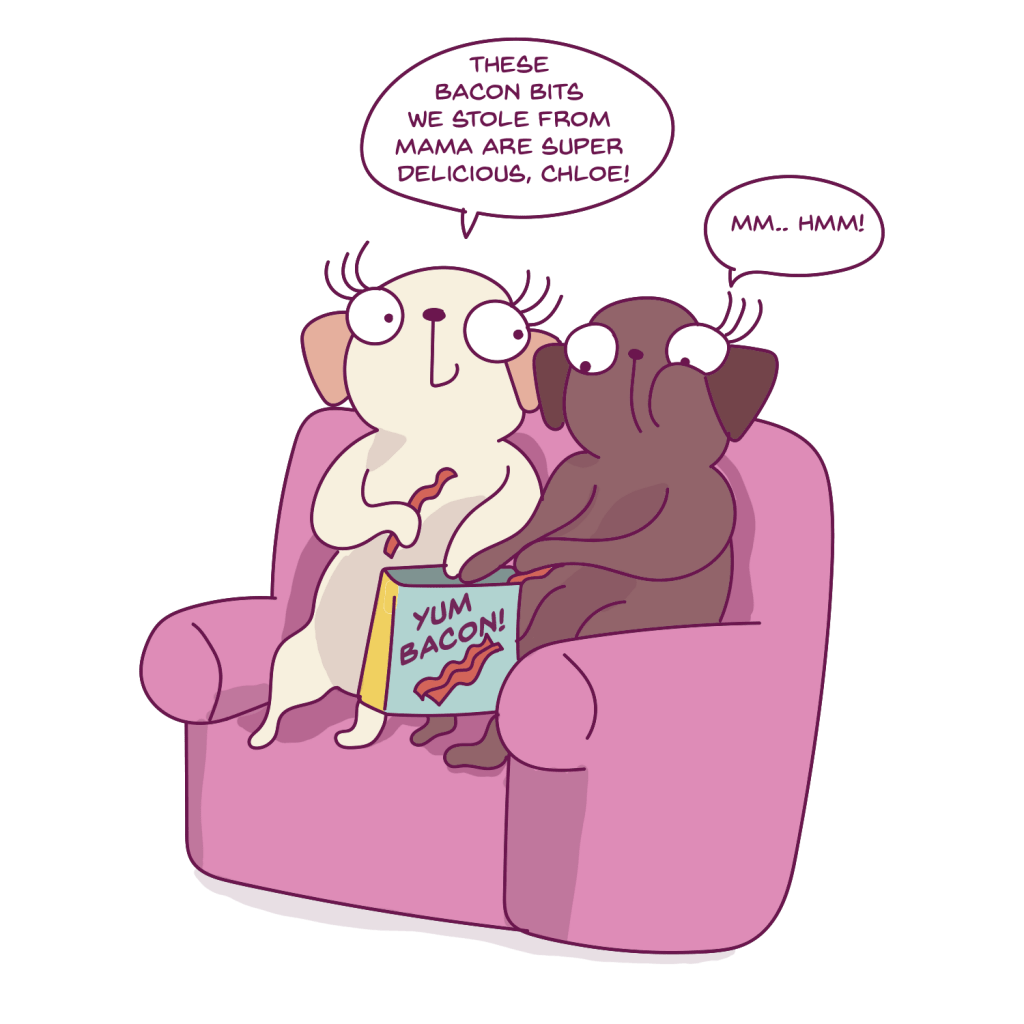
Table of Contents
The Benefits of keeping a Notebook as a Blogger:
1. You can analyze your progress
Keeping a notebook is the best way to monitor your progress as a blogger. By continuously keeping account of important stats, you will realize what is working for you and what isn’t.
Flipping through your notebook when it’s finished will give you great insight on your growth as a Blogger and a person.

2. Enhance your productivity.
Because I love writing and creating, I find that writing in a notebook really helps me stay productive and focused.
I currently use my Blog Planner and Trello side by side and it helps me blog consistently.
Without further ado, here is a list of 21 things that you can write in your notebook if you are a blogger or love notebooks, pens and the whole shebang. Let’s dive in.
Before I begin, here are a few posts that will help you maximize your productivity if you’re working from home:
- 27 Hacks to be an Ultra Productive Blogger
- How to Plan your Blog Content for a Whole Year and Crush it!
- The Badass Guide to Blogging more Consistently
- What to do when you Want to Quit Blogging
- A Step by Step Guide on Writing a 6 Figure Business Plan
1. Ideal Reader’s Profile

This should be the first page in your notebook/planner.
You can get collect this information from Google Analytics by reading your audience’s demographics and in time when people reply to you or purchase your products. My audience is mainly between the ages of 18-35.
80% are women readers and they are into arts, home crafts and education. By learning who your target audience is, you will be able to write posts that are catered to them and this in turn will increase your conversions and sales!
Basically when you know whom you’re writing for, you will be able to plan your blog content in advance, thus increasing your traffic and making more money.
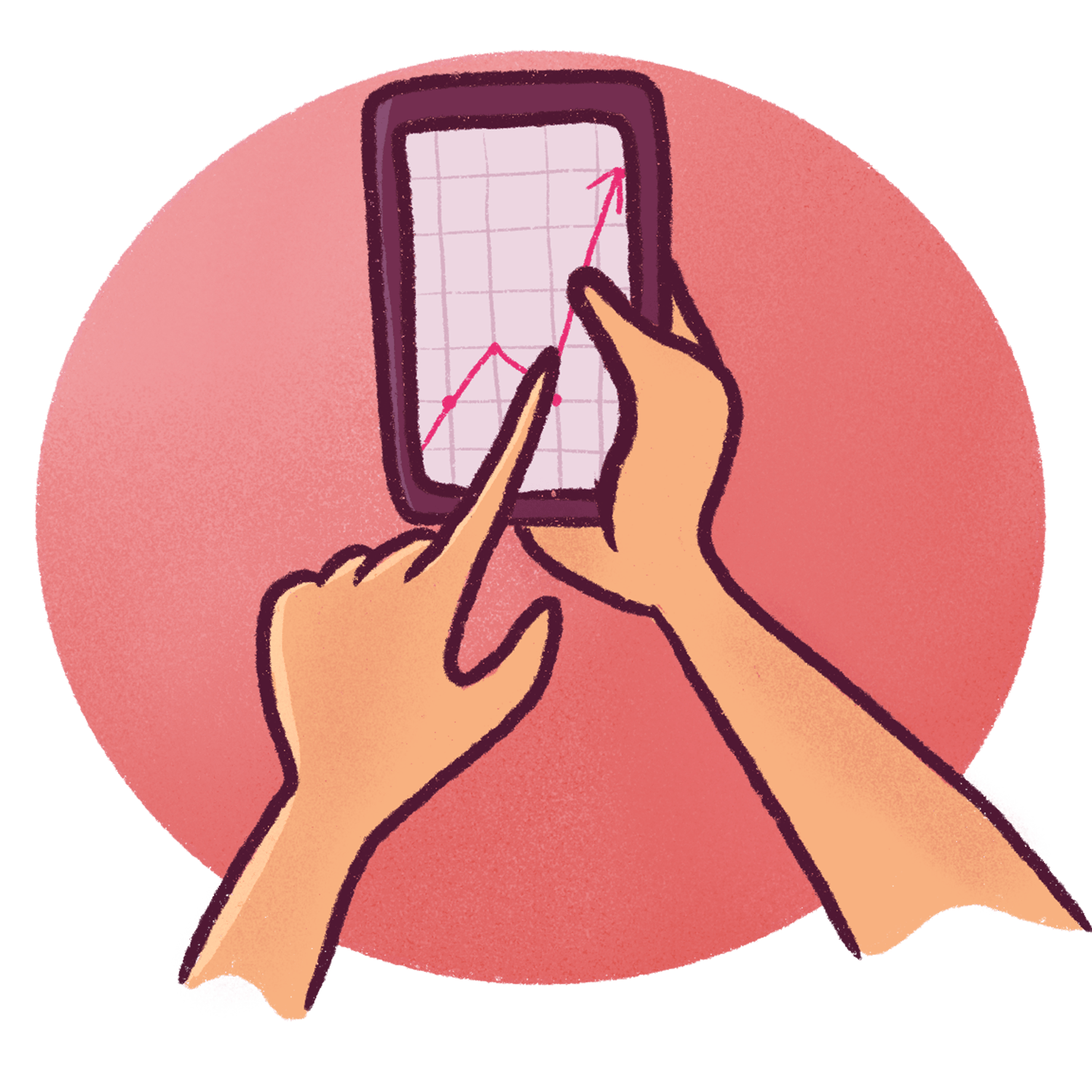
Whenever I get an idea for a blog post, I go through my audience profile and see if it is suitable for them. Therefore, this particular record is mainly to serve you as a reminder to whom you’re actually writing for.
Paying attention to this one metric will really help you increase your conversions. Otherwise, you’ll just be getting pointless traffic that leads to nothing.

See what I mean?
2. Social Media Goals and Pageview Stats
Currently, my main Social Media is Pinterest.
So, keeping goals for each month and recording your stats every single week/month is a good way to record your growth.
Other than Social Media, it’s also a good idea to record your Blog Pageviews.
Knowing how much you grow will give you a fair idea of what is working for your blog. Certain Blog Posts you write may pull in a lot of traffic.
It’s always a good idea to know where your traffic is coming from.
Pinterest Hack: See your most popular blog posts by opening your Google Analytics and heading to Behaviour > Site Content > All Pages. Create 2-3 additional pins for those posts and schedule it to Tailwind to watch your traffic explode!
Helpful Read: How Tailwind helped me gain over 18,000+ pageviews in my 3rd month of blogging.
True, you can keep an Excel Document maintaining these, but I like to carry this information everywhere with me.
Hence, I have a dedicated set of pages in my notebook only for Blog stats. Before I begin my work each Monday, I flip through my blog stats to see how much I’ve grown in the past couple of weeks.
It not only motivates you to do so much better, it also never lets you forget how you started.
3. A list of all your Blog Post Ideas
Being an Illustrator and Blogger, means never being able to shut off your mind.
A Eureka moment can pop up at anytime! Whether you’re in the loo, or snoozing in a bus – it is always crucial you write your ideas down before you forget them.

And therefore, you should keep a huge list of ideas for your Blog Posts so that you never run out of things to write about. Reading through the list will also help you generate related ideas!
Additionally, you can also take a popular post that’s gone viral and create a Mind Map.
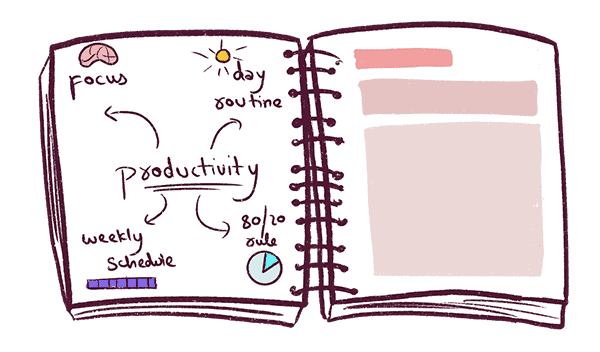
To do this, simply write your popular post title in the centre of the page and write similar ideas around it and connect it with arrows! You can branch those ideas into more ideas and so on! This is basically how mind-mapping works.
4. Keyword Strategy
When I’m using UberSuggest or SpyFu for my keyword strategy before writing down a post, I note down the keywords that I’m going to use along with the Search Volume and SEO difficulty.
This helps me narrow down what long-tail keyword I’m going to use for my Blog Post.
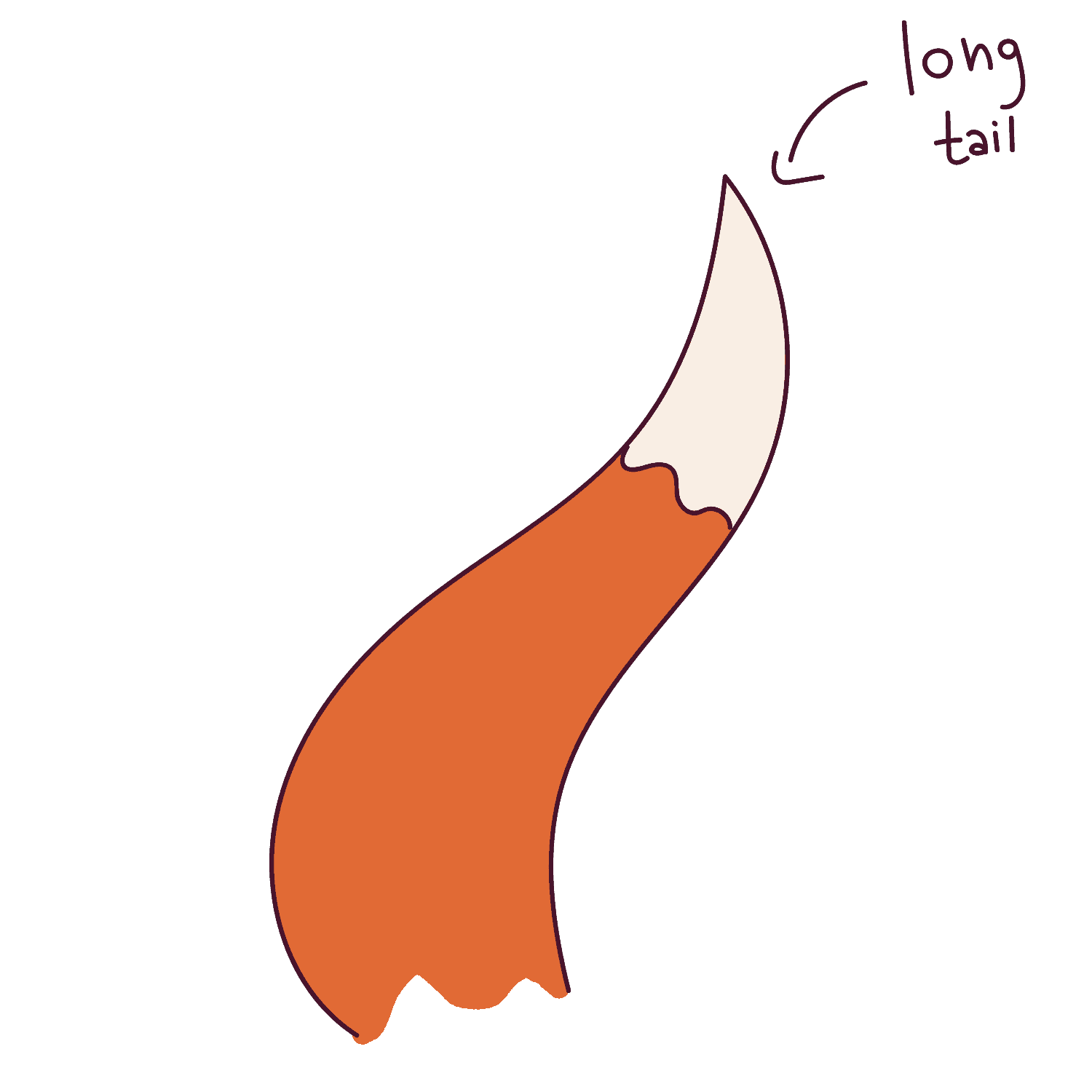
Once I’m done coming up with all the keywords, I keep the notebook open while I outline/flesh out the post.
By having everything right in front of me, I am able to write seamlessly and systematically without any loss in focus.
5. Blog Post Titles
The headline of your Blog Post is extremely important because you can spend 3 hours writing the best post in the world but if no one clicks on the headline to read it, you’ve failed.
So, spend at least an hour writing only headlines for your next blog post!
Once you’ve decided on the blog post idea you’re going to write, you have to test out a few titles before you find the one that you’re going to use.
Use the best one for your title, and the other 8-9 for your Pins.
And there’s no better way to do this than to use your notebook to scribble down a few plausible titles.
Using the keywords that I’ve already come up with, I am able to draft 9-10 powerful but quirky headlines under an hour.
Pauline from Brand Glow Up has written an astounding article on how to come up with catchy blog post titles! Additionally, she even offers a free template that you can download and use to come up with your own clever titles!
6. Blog Post Outline + Call To Action
Once, I’ve usually decided on a blog post idea and written down the keywords I’m going to use, I like to state my call-to-action for the post.
What is my post going to do? What is the main purpose? For instance:
- Collect leads
- Raise Brand Awareness
- Promote an Affiliate Product
- Help readers enter a sales funnel like an email course
- Garner Traffic
Once I’ve decided on my call-to-action, I pour out all my thoughts into my notebook and outline the content or the skeleton of the post onto a few pages in my notebook.

a.k.a. pink skull
This helps me understand what topics I need to cover in the blog post in order to do it justice.
When I outline the post in my notebook, I’m also able to arrange and organize my points better.
This is usually a very messy and raw process, but trust me it speeds up the writing process. Because when you sit at your WordPress Editor, you’re no longer staring at a completely blank canvas – you have the complete outline in your notebook!
7. Editorial Calendar
I like to plan my blog content in advance.
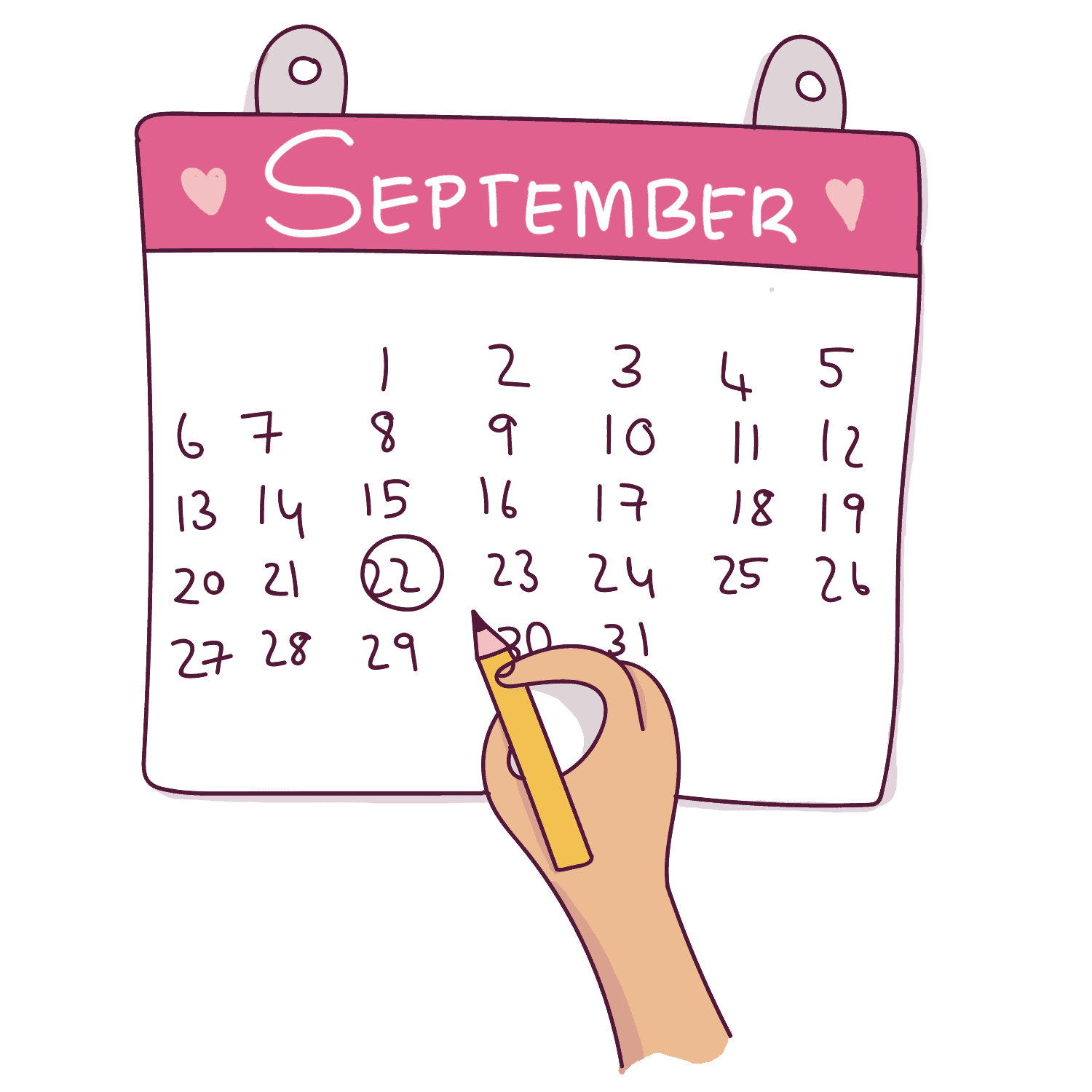
I try and focus on 1 theme for each quarter. For one quarter, I may focus on posts that talk about just gaining blog traffic. In the next, I may cover side hustles, and so on.
And I like sprinkling productivity posts in between like this one you’re currently reading to keep things interesting.
Although I don’t maintain my Editorial Calendar in my notebook (I use Trello for this), I know loads of people who do!
You simply create a Monthly Template in your notebook and write your blog post ideas for the month on post it notes and stick them on the days that you wish to post them. Like this:
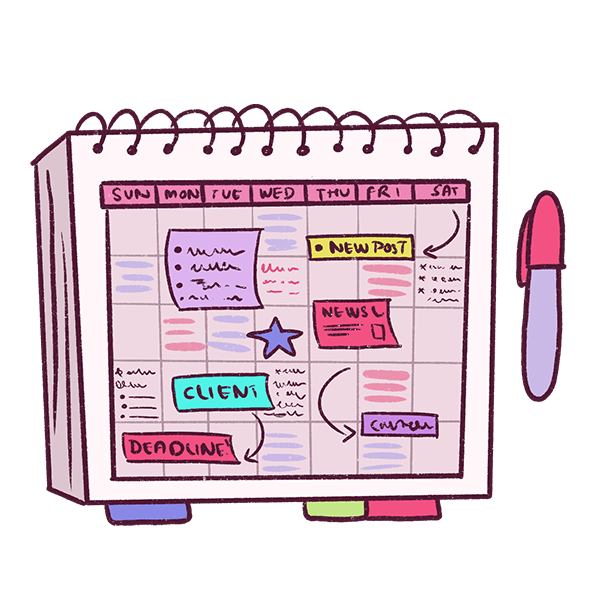
The benefit of doing this is that you can move the post it notes around in case you want to move the blog posts around. So, no mess!
8. Business Strategies for the next Quarter
Doing this has really helped me focus my time and energy on things in my Business that actually matter.
Every Quarter, it’s good to focus on 1 area of development.

We’re adorable but you will feel a world of pain if you step on us.
For instance, on one quarter, you can focus on guest posting on websites that you look up to. Or you could spend your time updating extremely popular posts so that they get you more traffic and boost your SEO.
I usually like to draft all of these strategies when I’m writing my Business Plan for the year.
If you like pretty printables, you can just get my printable Business Plan that will help you grow your blog from scratch the right way!
9. Newsletter Outlines
I like to send out a newsletter every week and during the week, I write down points I want to cover in my Newsletter.
You can form a brief outline of everything you want to say in your Newsletter in your notebook/planner.
For instance, on one week you can talk about a helpful tip that you just discovered in your industry that will really help your readers, or maybe talk about a product that you’re affiliate for or hold a sale in your shop and so on!
Raelyn Tan has a humongous post on Newsletter Content ideas you can use for your next newsletter!
10. Weekly, Monthly and Quartlerly Goals
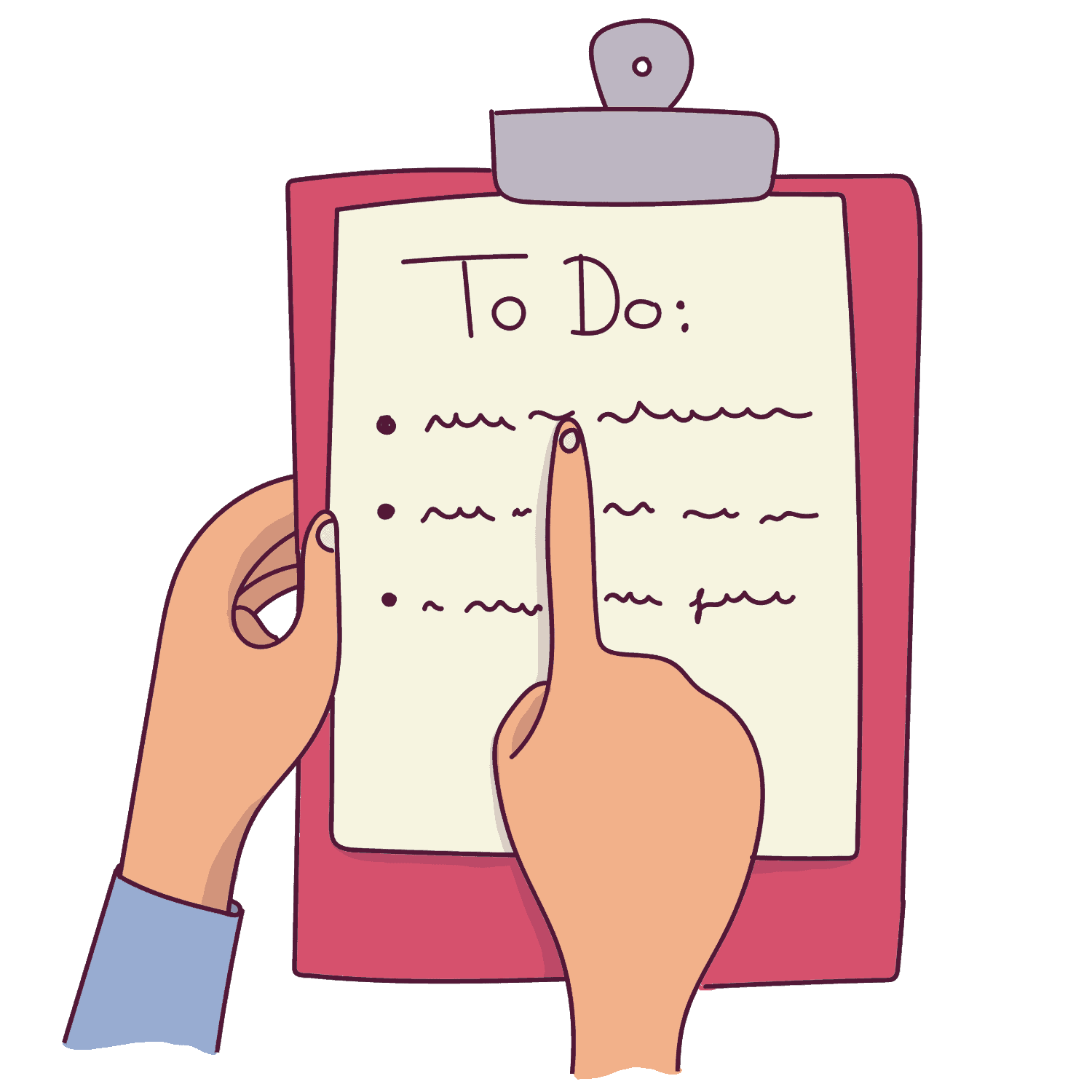
As a blogger, it is important to focus on your goals in order to measure your growth and success.
Your goals for the week, month and year, and so on.
When writing down your goals, remember to be as specific as possible. For instance, this month my goals were:
- Edit and update my Traffic eBook
- Update accompanying Email Course
- Research and Validate new product idea
- Redo Front Page of my Website
You can organize your goals according to category – content creation, marketing, digital product, social media and so on.
When you reach your goal, remember to put a little tick next to it so you feel a strong and refreshing feeling of accomplishment.
RELATED POST: 27 HACKS TO BECOME AN ULTRA PRODUCTIVE BLOGGER
11. Daily To-Do list
Being a home-maker, dog-mommy, illustrator and blogger means finishing a list of never-ending tasks. Forgetting even one of them could result in total chaos.
Therefore, it’s a good practice to keep your daily list in hand so you don’t waste any time trying to remember what you need to complete for the day.
I use my Blog Planner to make my life a tad bit easier.
12. Inspirational websites
Sometimes, a daily dose of inspiration is just what you need to start your day.
I have a couple of lists that I maintain in my notebook. Here are some lists of websites I currently maintain:
- Blogging Websites that teach me more about Online Business and Blogging.
- Tech Websites that help me become a clean coder.
- Creative Websites that give me ideas for color and font combinations and designs.
- Positive Lifestyle Websites that always supply me with happy and helpful articles to inspire me.
You can also maintain a swipe file of websites you like and want to learn from.
For instance, I noted Websites that I signed up to and asked myself what drew me to them.
Note these points down. This will help you create digital products and offers that your readers will not be able to resist.

This is exactly how a business works.
Aside from these, make a list of Blogs that you can visit each week/month. Leave comments on these blogs and network with these bloggers. It’s a good way to grow in your field!
13. Expenses/Revenue
For my first blog, I used to wonder why I made almost zero money blogging.
But writing things down, really helped me figure out where I was falling short. I was able to understand my Blog better and come up with a Blog Content Plan.
Additionally, being a blogger means constantly investing in products to run your blog smoothly.
Ultimately, you should never lose track of what you’re spending on.

Your money is hard-earned which means you should record exactly where it is going and whether or not the investment is worth it.
You can read my post on how much I actually spend on my Blog to keep it running.
So, if you buy software, tools, online courses, or material for your website like .PSDs and stock photos, write it down. And note how it is helping you. See if the product is worth it. If it isn’t helping you in any way, let go after 3-6 months.
Similarly, you should note down your earnings.
By knowing how much money you make from which sources, you will have a clear cut idea of what income source is keeping the pot boiling!
This will help you understand what income channels you need to focus on so you can earn more through those specific channels the next month!
RELATED POST: HOW I EARNED $3451 IN MY 6TH MONTH BLOGGING
14. Snippets from Blog Posts/Podcasts/Books
I make it a point to read/listen to something inspirational or educational in my field of Business every single day. And I do this during some mundane activity, like washing the dishes.
I love to read books related to blogging and entrepreneurship. Of course you can finish a book in 2 hours or less.
But how much of it can you remember and implement?
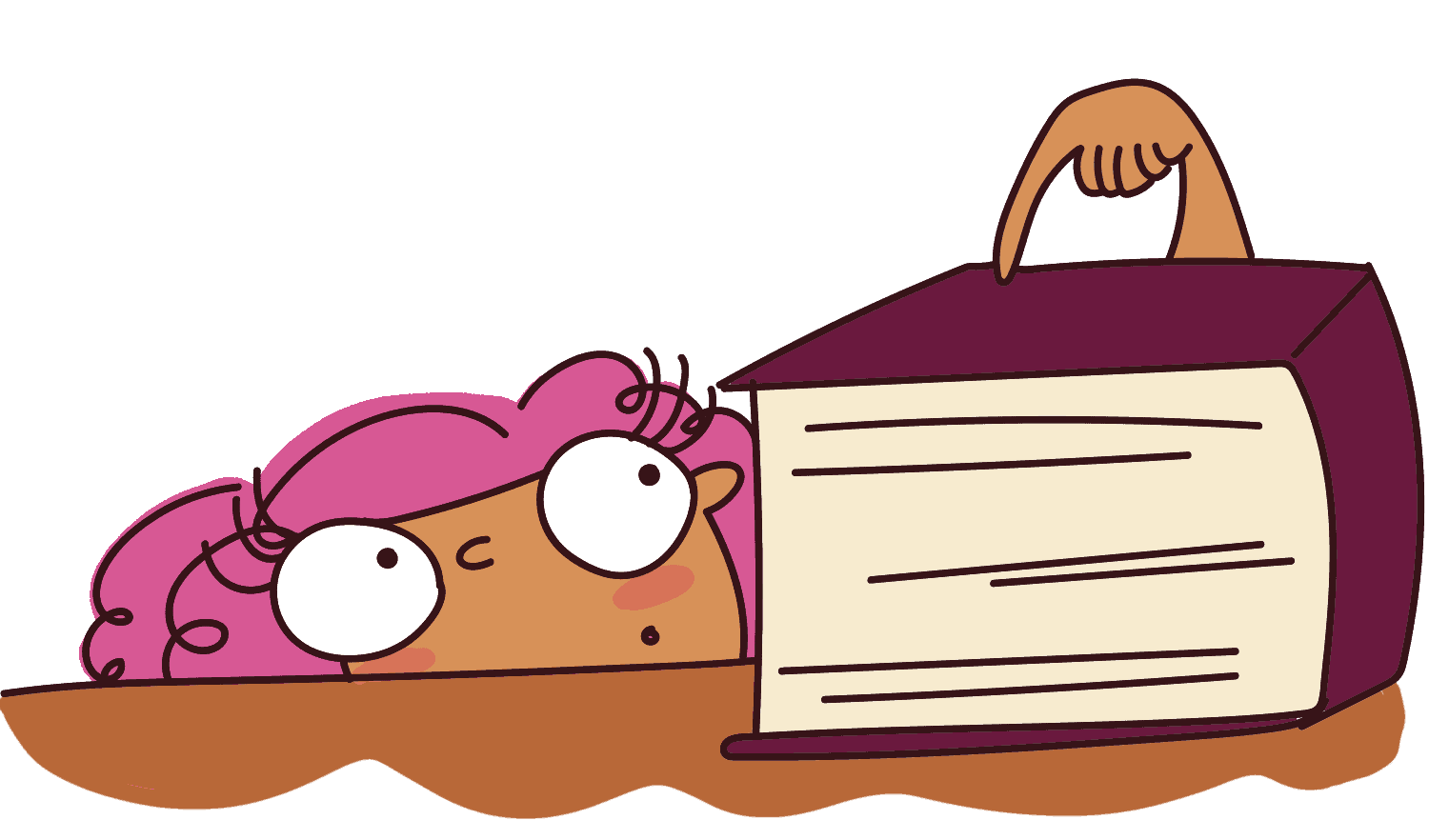
This is where a notebook comes in handy.
Write the title of the book you read, and jot down all the important points you feel you need to retain for a lifetime. You can even list page numbers you want to refer to in the future.
15. Client Records
This is a great way to record meetings and important information related to your clients.
Whenever you have a meeting with your client, it is important to note down all of their requirements. Their likes/dislikes. Products/Services they love and so on.

You can later transfer those to your computer as it is important to keep folders for all your clients. You can also note down how much they pay you and when you’re supposed to deliver their product/service.
Whenever a client pays an invoice, I write it down in my Planner.
I have 10-15 business days to complete their work and send it over to them. You can also note down deadlines and the dates you need to send a Payment reminder to them or use a nice Invoicing software like Freshbooks.
READ MORE: 17 WAYS TO EASILY GAIN CLIENTS ONLINE + FREE WORKBOOK!
My planner is my raft. I wouldn’t be able to survive without it.
Additionally, if you like journaling, you will definitely love this beautiful creative bullet journaling class.
Little Hannah teaches anyone with absolute no journaling skills how to be super creative! And all you need is a simple notebook to get started. Do check it out!
16. Products/Services Analysis
As a blogger, you will sell products and services.
Maybe its an e-mail course, or a book, video, or presentation.
Track your income and a small list of what you could have done better to promote it or what went wrong with promotion, or how you could tweak your products/sales pages to make it more attractive and better converting.
Basically, create a progress report at the end of each month to help you understand where you fall short and how you can improve.
Write down which products do better than most so you can also use your notebook to come up with new related product and service ideas!
For instance when I created my printable Blog Planner, my digital product sales almost doubled! So I went ahead and created a Business Plan Workbook and Guide and a Self Care planner to compliment those printables!
READ MORE: 23 FUN WAYS TO OVERCOME CREATIVE BLOCKS THAT ACTUALLY WORK!
17. Affiliate Companies
It can be difficult to remember all the affiliates you’ve signed up for.
Therefore, I keep all my affiliate links in my Notes app on the computer, so that it’s easy to copy and paste the links.
However, I also like to keep a list of all the companies I’m an Affiliate for in my Notebook. They are arranged in different categories. I have several categories and maintain different lists.
It’s easy for me to promote a certain affiliate. I just need to search for the category that I’m currently writing about and I get everything I’m looking for.
18. Why You Started Blogging
It’s really easy to forget why you’re blogging because you’re doing it all day and every day.
That’s why, it’s important to remember what made you start and why you’re blogging.
Aside from wanting to build a Brand that’s fun, colorful and totally out of this world, I wanted a creative outlet.
One of my dreams is to buy my own little house with a garden (so I can house more dogs) someday. I keep this in the back of my notebook, so I can see my dream every day.
And yes, this keeps me motivated all the time.

19. Inspirational Quotes
Have you ever read a quote that’s made you stop and think? Like actually… stop and think.
I’ve read some quotes like that and I never, ever want to forget them. So, what do I do?
I write them down.
No surprise there, huh?
I categorize quotes too. And keep them in different pages based on what area of life they help with. When you’re feeling down or just need a litte pick-me-up, go through these quotes.
They really help!
YOU WILL ALSO LOVE: 13 DEADLY BLOGGING MISTAKES I MADE IN MY FIRST BLOG
20. Your achievements and feelings.
Every time you feel you’ve achieved something, write it down.
Your achievement needn’t be a big one, it just has to bring a smile on your face. Such as:
- I completed my first opt-in! Yay!
- Gained my first 50 followers! Wow!
- I just opened my shop!
- Just earned my first 10 dollars doing what I love! OMG!
- My puppy is finally toilet-trained. *dances around a bonfire and throw leaves in the air singing “Hooga Booga!”*
YOU’LL ALSO LOVE: 27 EASY TIPS TO DOUBLE YOUR BLOG TRAFFIC THIS YEAR!
21. Number of hours You Work
I note down the number of hours I work every single day and label how many hours I spend doing what.
For instance:
- 2 hrs marketing (includes any promotional activity)
- 1 hr blog post (working on content for my blog)
- 1.5 hrs product (working on a new digital product)
- 1 hr maintenance (includes replying to comments, email, sprucing up my blog etc)
I also note how many hours a week I work and at the end of the month, I calculate how many hours I worked in each category.
This really helps me understand how I am spending my time blogging and what I could do better next month!

22. People you want to work with/mention.
Whenever I find someone I want to work with, or just think are a good match, I write their names and email IDs down.
If they don’t have contact information, I just include their URL so I can directly head on over to their contact page to reach out to them.
Write down names of Influencers who you think
- will make great affiliates for your future products
- you want to mention in your next post or product
- would be wonderful to partner with for a collab
- would be interested in accepting a guest post from you
23. Website Tweaks to Implement
Your Blog requires constant maintenance.

Whether it is adjusting the popular posts on the front page, or adding a new opt-in to your popular posts, or redoing the footer, it is imperative that you maintain a list of these every month and assign a deadline to all of them.
Conclusion:
Ultimately, a notebook can be used for a lot of things, but using it for your Business along with a Project Management Tool like Trello or Asana is a great way to keep your productivity high and make working more fun and less tedious!
And with that final point, this extremely long list has come to an end.
Do you currently use a notebook for blogging?
If so, what do you love writing in it?
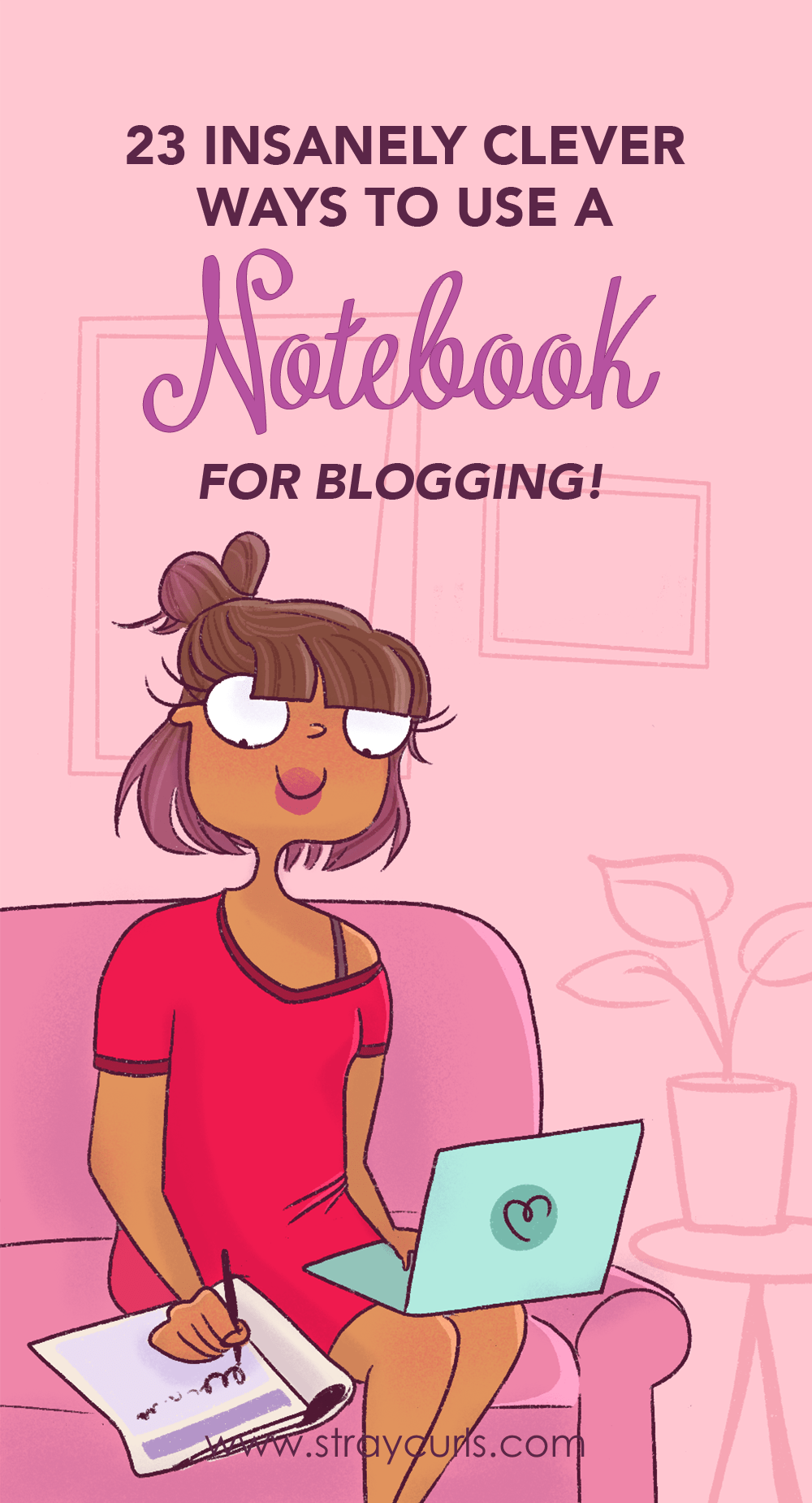
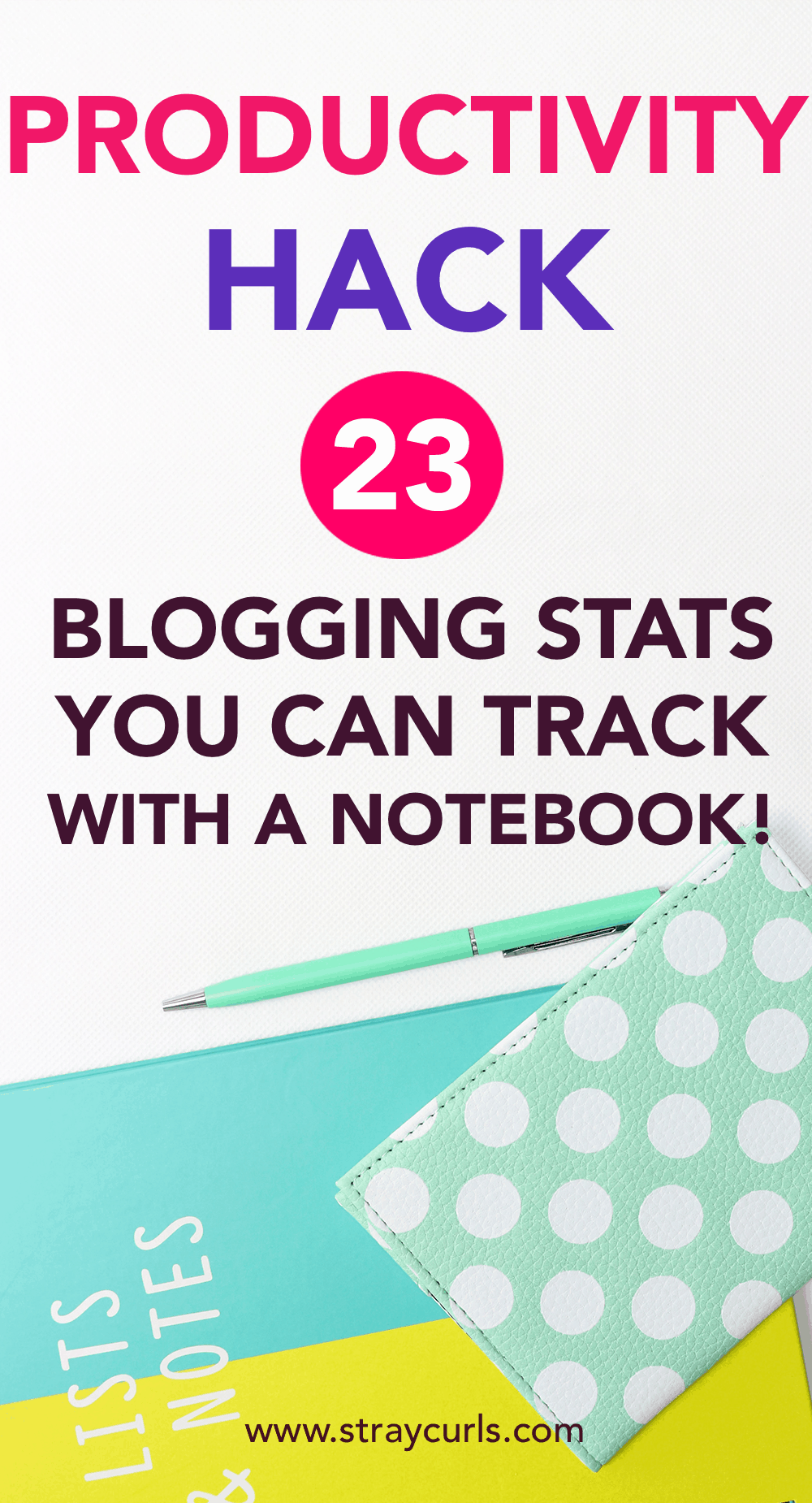
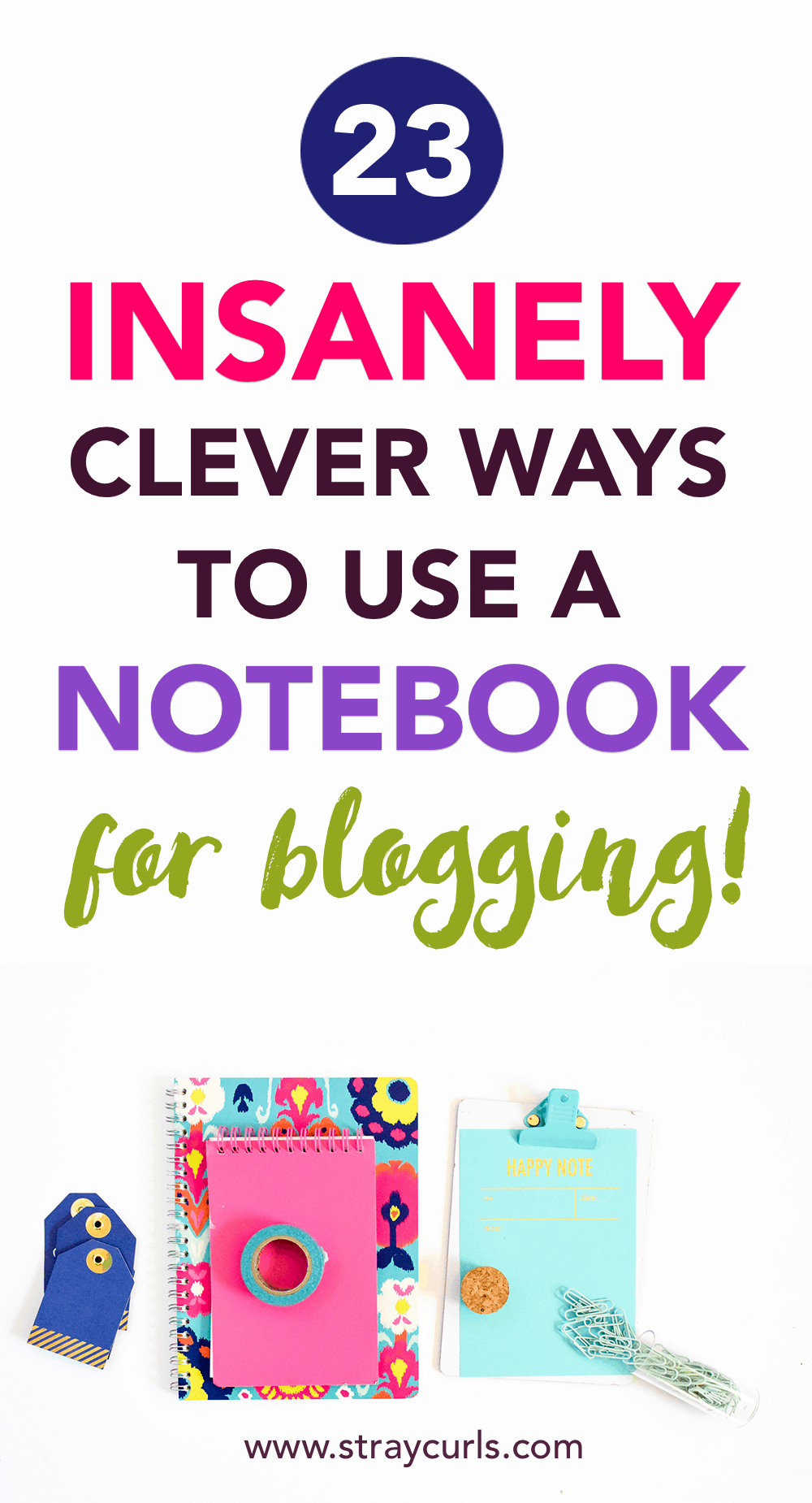
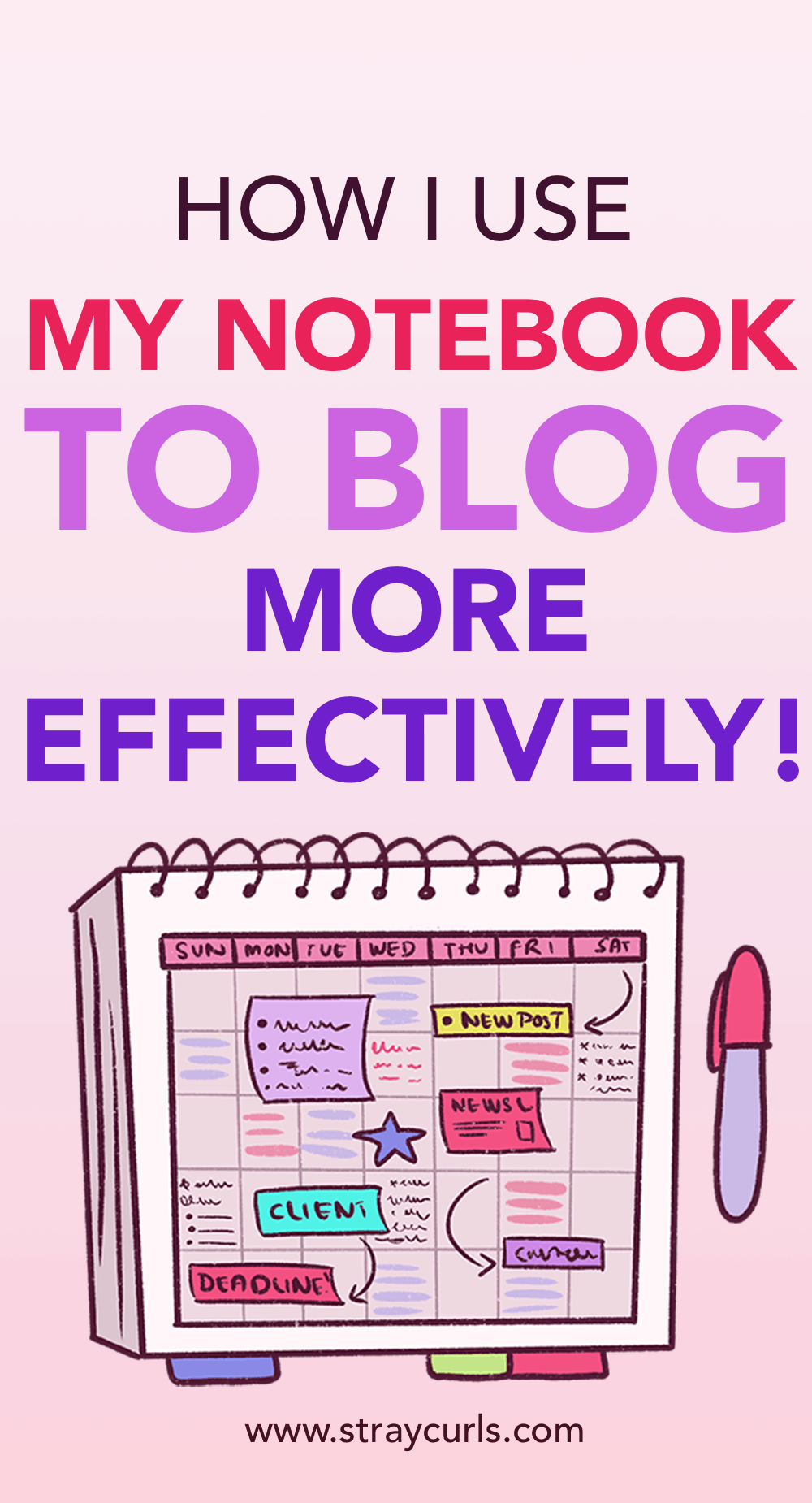
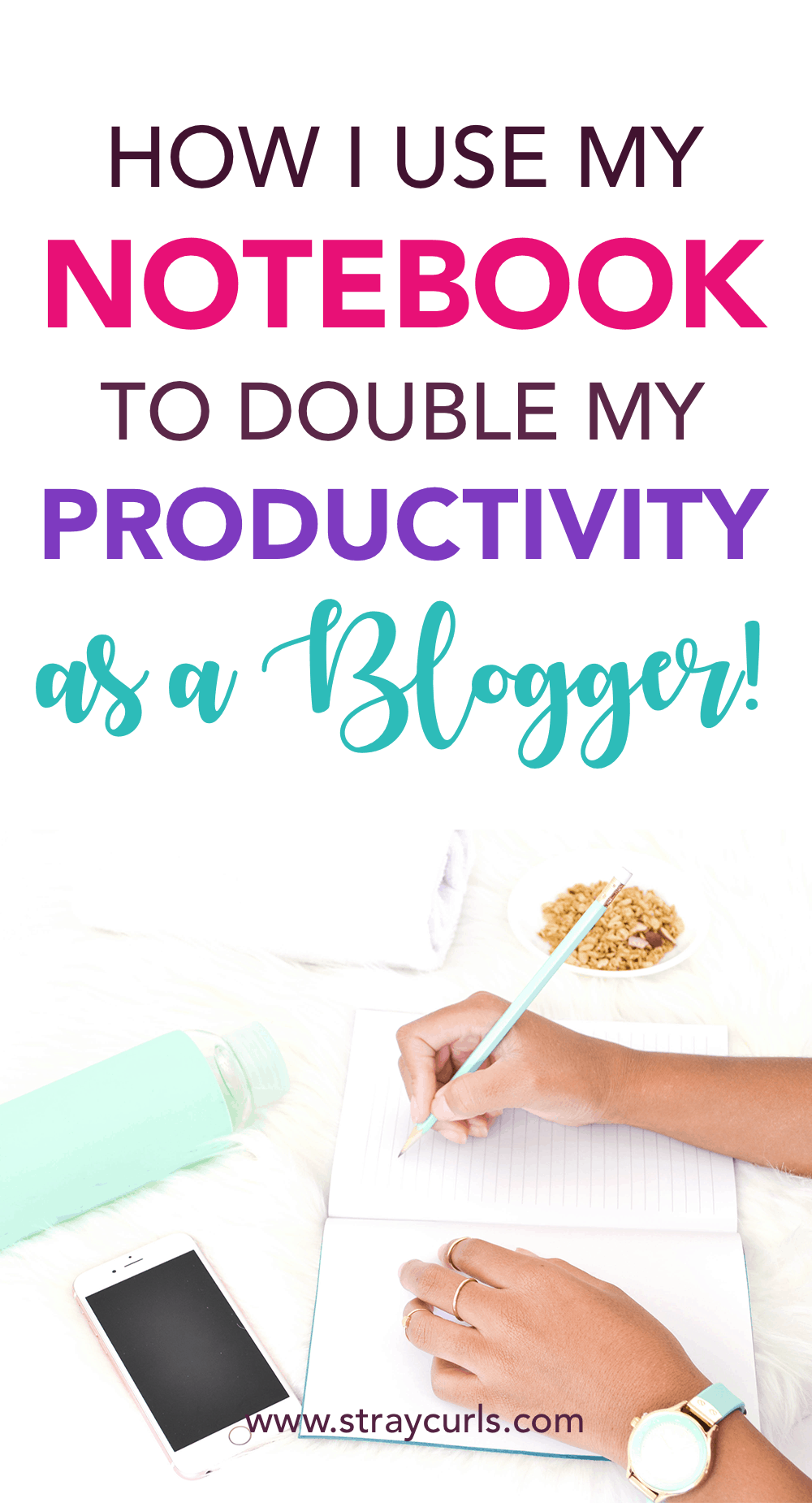

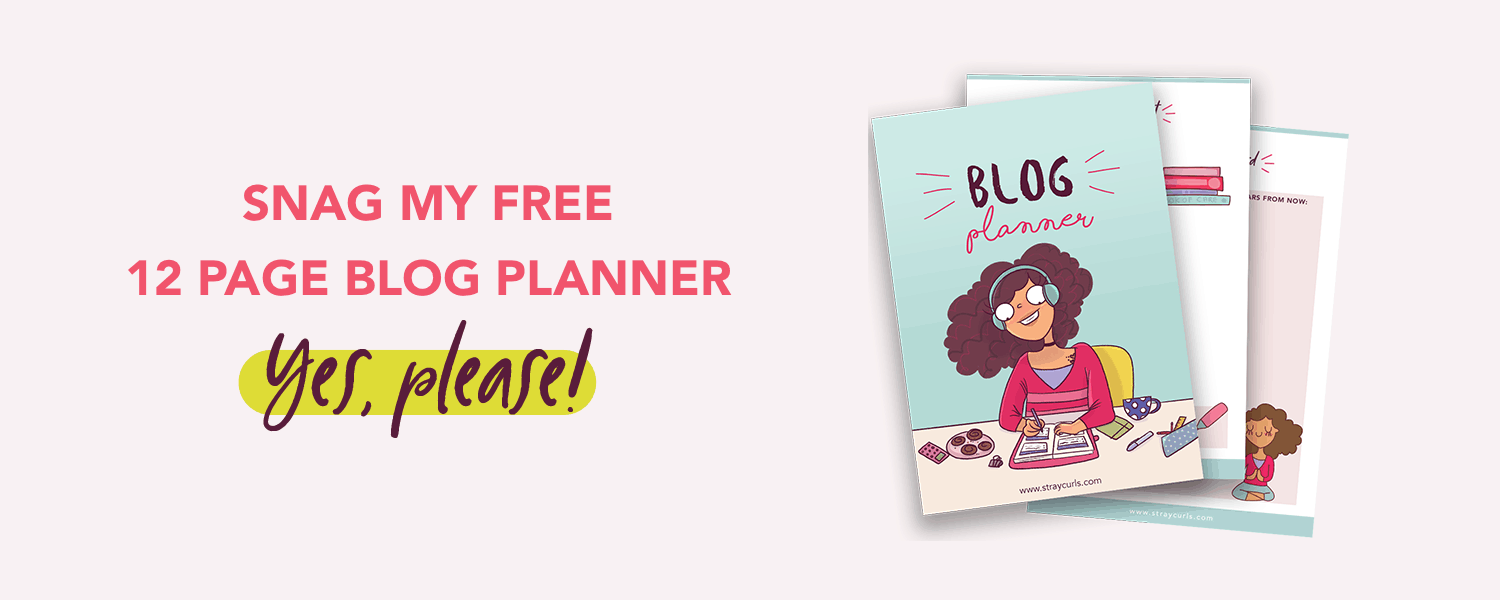
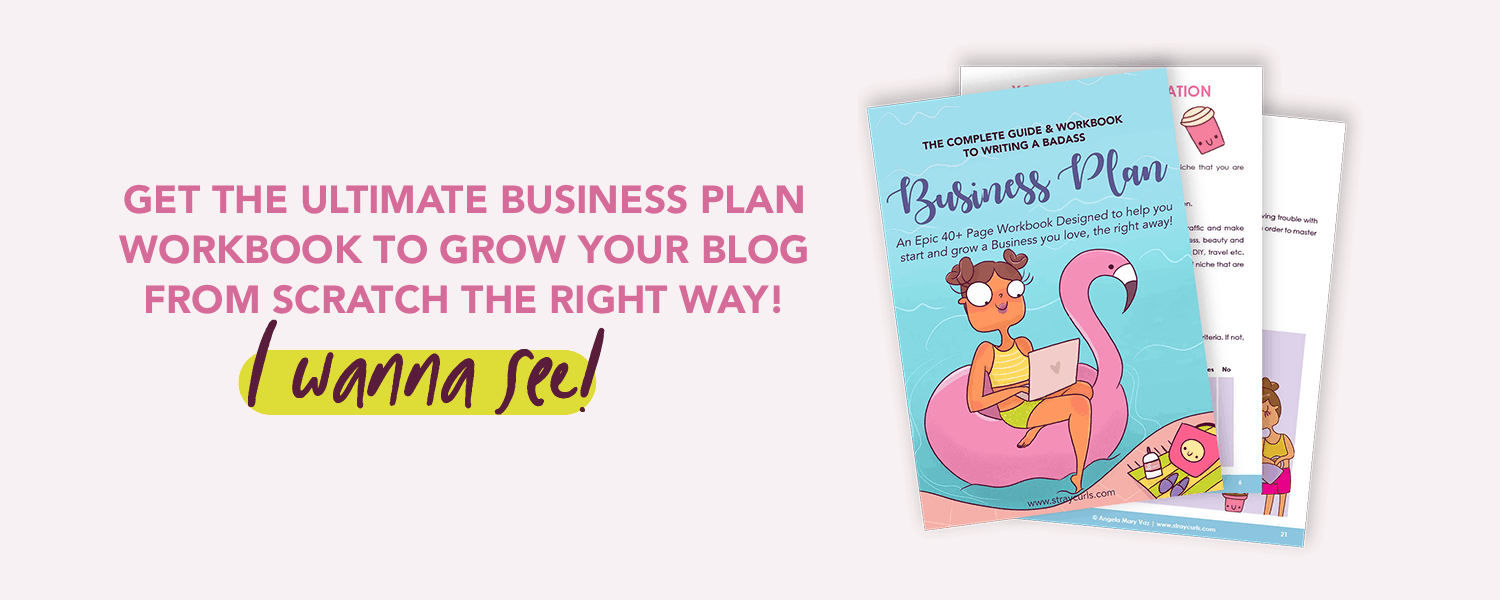
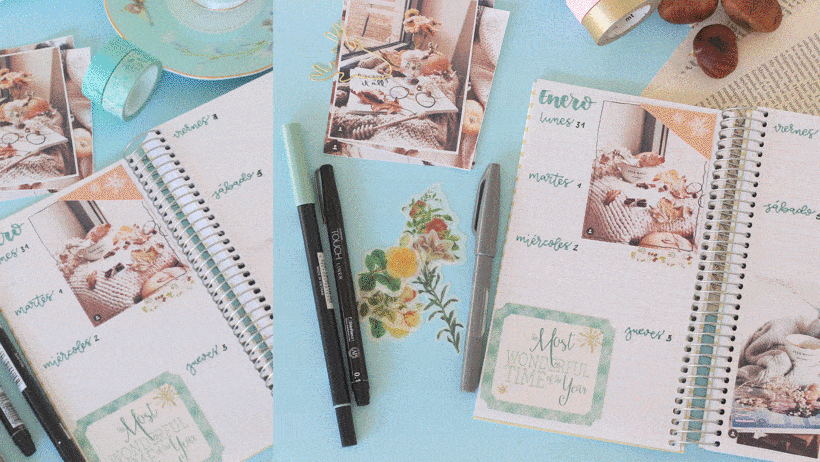





Love this article. I have a small collection of journals that just hang around, doing nothing! I try to write things down, but I always forget (or they’re not with me!) Hopefully this is what I need to get me going!
Hello Samantha,
I’m so glad you loved this article. Same here! I have to write things down, otherwise I forget! Thank you for dropping by. Do stick around for more.
Lots of love,
Angela
I love this practicality but also the encouragement of keeping lists of victories. We must be our biggest cheerleader ~ This resource is excellent for the seasoned and the beginning blogger!
Hello Dana,
Yes, that’s very true. I love the way you put it, “We must be our biggest cheerleader.” Glad you loved this post. Do drop by for more. If you have more ideas, feel free to share them.
Lots of love,
Angela
Thank you for sharing! I agree that writing things out helps tremendously. :)
Hi Gemma,
You’re definitely not alone on that one. Writing is seriously helpful. Whether we want to come up with ideas, or just remember them, it’s always a good idea to write it down. Thank you so much for dropping by.
Lots of love,
Angela
I have notebooks everywhere to help me deal with brain fog (from illness). I’ve even taken to using Evernote on my phone now as sometimes I don’t have my handbag with me but I always have my phone.
I like your idea about keeping stats handy for motivation. I only compare to the previous month at the moment. I do like excel though but againI have that on my phone!
Also, I easily lost notepads but I can always ring my phone to find it! Great post. Thanks. xx
Hello Cath,
I have a lot of notebooks too. I’m really sorry you suffer from brain fog. I’ve never heard of the term before, so I had to look it up. Writing things down so you don’t forget is an amazing idea. It really helps keep all your thoughts in one place. :) So glad you loved this post and it helped you. Please drop by soon. Let me know if you have any more great ideas. :)
Lots of love,
Angela
I try to write every day and definitely has change my life. I feel less stress and more clear in my mind!!!
Thanks for the article! I might need to finish to fill out my bucket list
Hugs from Vietnam
Milé
milerubio.com
Hello Milé,
Writing everyday is seriously awesome! If you make time to write everyday, you definitely have your priorities in order. So glad you loved this post. A Bucket List is something everyone should have. Be it in the corner of the mind or down in paper. Thank you so much for dropping by.
Love from India,
Angela
Hey there! I just wanted to say as a blogger Myself I found this page extremely useful and I’m so glad to have found it! Also I love your page and you as a person – thanx for posting this! xx craftisme
(You can check out my blog if you’d like over here: 101diycrafts.wordpress.com)
Hello Craftisme,
I’m glad you loved this page. Thank you so much for the lovely comment. You are so sweet. I have already sent you an email in reply to yours. Do check it out.
Lots of love,
Angela
You don’t know how long I’ve been googling to find a post that addresses this specific issue! Haha. I bought a really cute notebook and pen set especially for use on my blog and I have been having trouble finding things to fill it with. Thanks for the list, it’s great. If you have any updates, let me know personally.
Hello Eden!
I’m so glad you enjoyed this post. I have loads of notebooks. I ordered the BanDo agenda and I wanted to use it for blogging. So I came up with these ideas. I will make a new post on how I use it so it can be helpful to you. :) You will most definitely be notified of future posts. Thank you so much for dropping in. :)
Lots of love,
Angela
Thanks, really good post-and most helpful!
Hello!
I am so glad you loved this post. Thank you for dropping in a comment. I really appreciate it.
Lots of love,
Angela
That is just an incredible post and very helpful also. I have just started my blog ( the 1st of January) and i will be writing some of this things on my many spare notebooks.
Carolina ;)
PS. You could check it out if you want, i has just one entry, but i am working on many more. Thank you!!
Hello Carolina,
I’m so glad you found this post useful! I saw your Blog and it’s indeed lovely. However, I’d suggest to change the background to white? Black is just too hurtful for the eyes. You will also attract more followers with a black on white blog. :D
Warm regards,
Angela
I am so happy that you checked it out and that you replied :D Thank you for the advised, I have changed it and it is true that is much easy to read. Thanks for everything !!
Carolina ;)
You are most welcome Carolina. <3 So glad I was able to help.
Hugs,
Angela
I love this article! I use notebooks for everything in my life and for my blog. I love to just write out ideas and flush out more ideas in my notebook. I love some of your ideas and I plan on starting to use some of them today.
I’m so happy you loved the post Melissa! :D
I too love notebooks and planners and I can’t get enough of them! :D I keep all my ideas in them and it saves me so much time!
Always a delight hearing from you!
Lots of love,
Angela
You touched down on real great points, as I am also a pen and paper girl, and do NOT like putting everything in to electronics. Out front and in the open so I can read or skim over anytime, but I was wanting to offer a suggestion, a record of your current week new subscribers and a time frame to send a nicely planned welcome email, maybe including a first time offer, ( I offer 1/2 off shipping on first orders, but I also switch it up, by having/keeping records of promotional offers as well…. Hope this helped in some way or another…I open in a few day so please stop in and sign up with me as well so we can keep in touch…well back to work because building your website, my 2nd home, is not a easy or quick job…
Hello Hope,
I simply love your name. *hi five* for being a pen and paper gal too! I do keep a list of subscribers earned everyday, but after I joined convertkit, it does all the work for me! What’s amazing is, you can even set your welcome email series and tag your subscribers so they get different sequences. It’s super advanced, and if you haven’t looked into it yet, I highly urge you to check it out! :D
It’s an amazing idea. Thank you so much. I wish you tons of luck building your website! Wishing you a happy Easter as well Hope. We will always keep in touch, you have my email ID. Feel free to email me any time!
Lots of love,
Angela
Angela
Love your article much! I’m a notebook/ planner buddy… I really enjoyed this post + it tackled things I need with my budding blog! Thanks a lot!
Hello Pheng,
Thank you so much! So glad you loved these ideas. :D Blogging becomes so much more fun when you love writing!
Warm regards,
Angela
Yay for notebooks…I am never happier than when I receive a lovely notebook and a pretty pen…I am surrounded by notebooks but have also picked up a few tips so thank you…Have booked marked this post as there are a few links I want to read…Have a great weekend :)
Hello Carol,
Omg! Same here! I never ask for gifts that isn’t stationery. That’s how much I love paper and pens.
Wishing you a delightful weekend as well! :D
Angela
Hi,
I found this article via Pinterest and I just love it. The image you have used is just so cute. You have a lovely blog.
Hello Kristen,
Thank you so much. You’re too kind. And OMG, I love your Blog name and the idea behind your blog! :D
Hugs and kisses,
Angela
I love this, and like you, I prefer pen to paper and am trying to get into the habit of using them more often. I actually JUST dedicated a notebook I’ve had for 10+ years to blogging, so finding this came at the right time. Great ideas.
Hello Jhunelle,
Thank you so much! Oh there’s nothing better than the feeling of pen on paper. :D And it’s about time you dedicated a book to blogging! :D
The old ones are the best.
Hugs,
Angela
This is lovely. Thanks for sharing such a useful article. Keep on sharing.
Thank you so much!
I wish I’d found this article earlier. I’m definitely going to start keeping a notebook! Thanks for sharing these great tips.
Super happy that you loved this post! :D
Yes, yes, yes! I used to work in a bookstore because being surrounded by all those books and stationery is just heavenly. And I love making notes and lists too.
I’m intrigued by the list of books you recommend for bloggers. But if you have to recommend only one book for a new blogger, which one would it be and why? I’m looking for something that’s not so basic because I’ve already started a blog so I don’t need a step-by-step guide on how to choose a blogging platform or hosting provider, etc, but something that can make me improve my site.. preferably in an easy-to-understand language, not too much jargon. Thanks in advance for your time!
Ha ha, I’m so glad I’m not alone. I am a stationery hoarder. But now I try and manage with what I have.
I haven’t found an eBook that comprises of everything I needed to grow as a Blogger. Most of them are pretty basic, to be honest. And that’s pretty much why I wrote my own. This eBook is all about growing your Blog and actually converting traffic to sales and commissions. I’d recommend you checking it out:
https://www.straycurls.com/skyrocketing-your-blog-traffic/
However, if you’d like to get a taste of the content, you can take my free email course here:
https://pages.convertkit.com/2fa02aabee/a1b5b15aca
I hope this helps! :D
Lots of love,
Angela
Hello Ange.. I came across your blogs ts morning n it was a fresh start motivational ones. Coz I ve been deciding long enough to start my blogs not only for money making but I loved to pen down and start my foundations. But to be honest, I dnt knw how to start n how to begin! ☺.. But found out your Guidens leads me to climb the stairs now. Lots of ❤?. From North East India
Hey Majiang,
You are so sweet! :) Thank you so much! I’m so glad you’re enjoying the blog and I wish you all the best with your new blog!
Lots of love from South India,
Angela
Reading this made me really tired bc it was really big but,this article is really good ,i like your ideas and it motivated me very much.
Hey Manya,
I’m glad you liked it! :)
Thanks so much Angela! I have been scouring your blog and loving your amazing posts. You’ve really helped me a ton! This post was great and it’s ironic because I was just thinking about using a notebook to keep things together. I started tonight and am already pleased with seeing things on paper instead of on the screen. I’ll probably still use a mix of both but this is helpful.
Cheers and thanks,
Heather
Hey Heather,
You are most welcome. Thank you for your kind, kind words. I love notebooks too. And using them both together really motivates me to focus on my Blog.
Lots of love,
Angela
This was so helpful. Thank you so much. It will totally help me be more orginized
Glad you loved it Lilicorn!
Lots of love,
Ang
I just launched my blog and used a lot of your advice. Please check it out and let me know what you think!
Hey Sep,
I’m confused. Your blog is about relationships but your sidebar talks about starting a blog. Are you targeting people who are looking to nurture their relationships? Or people starting a blog?
No one wants to sign up to receive rocking emails. Create an offer that’s super specific.
Apart from that, your blog looks nice. Keep working at it!
Lots of love,
Ang
Love this! So many little things go into blogging and it seems like having all of this together is a great way to both stay organized and stay motivated. Plus, I think pen and paper are great for the creative juices!
I simply love writing. And the best part is ticking off your to-dos. It gives me such a motivational boost to get more done. :D
Thank you sharing this blog, I’ve gained a lot of ideas on how to better use my notebook ?
Super glad it helped! :)
I LOVE this post. I use Trello, but I’m still a notebook girl. These are great ideas! I can’t wait to go grab a new notebook this evening and get to work!
Hey Jessica,
Trello was wonderful for a while, but I found it a little glitchy. So I switched back to my notes app and my planner and I’m super happy and focused!
Let me know how it goes!
Ang
I’ve always been between a fully digital or fully physical (paper) system. This makes me feel a lot better about combining the two for my blog!
Hey Lydia,
I love using a combination of both, it gives me so much joy ticking off tasks. I’m currently using my Notes app for personal tasks, and my blogging planner for blogging tasks. They work great! So happy you loved this too!
Lots of love,
Angela
Angela, the 15 things for notebook are very inspiring, subscribed for your post updates.
Cheers
Riya Malik
You’re welcome Riya! :)
Sounds like a notebook could be very useful!
It most definitely is! :D
I really love this. I really do
I’ll like to be notified whenever you post.
Hey Josephine,
Just sign up for my blog planner so that you can get notified of newsletters. =)
Warm regards,
Angela